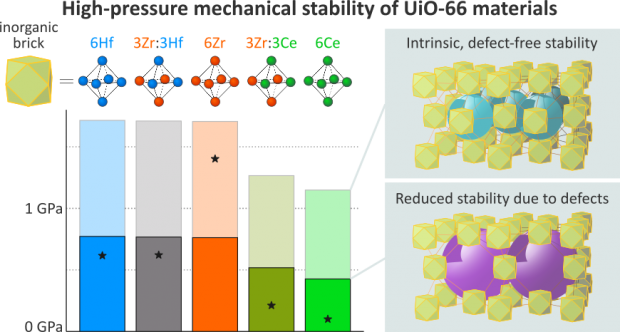
Abstract
In theory, bimetallic UiO-66(Zr:Ce) and UiO-66(Zr:Hf) metal-organic frameworks (MOFs) are extremely versatile and attractive nanoporous materials as they combine the high catalytic activity of UiO-66(Ce) or UiO-66(Hf) with the outstanding stability of UiO-66(Zr). Using in situ high-pressure powder X-ray diffraction, however, we observe that this expected mechanical stability is not achieved when incorporating cerium or hafnium in UiO-66(Zr). This observation is akin to the earlier observed reduced thermal stability of UiO-66(Zr:Ce) compounds. To elucidate the atomic origin of this phenomenon, we chart the loss-of-crystallinity pressures of 22 monometallic and bimetallic UiO-66 materials and systematically isolate their intrinsic mechanical stability from their defect-induced weakening. This complementary experimental/computational approach reveals that the intrinsic mechanical stability of these bimetallic MOFs decreases nonlinearly upon cerium incorporation but remains unaffected by the zirconium:hafnium ratio. Additionally, all experimental samples suffer from defect-induced weakening, a synthesis-controlled effect that is observed to be independent of their intrinsic stability.
